Odds are that your competition is doing something well. Otherwise, you wouldn’t think twice about them, right? So, why not learn more about what they’re doing right (and stay away from what they are doing wrong)?
After all, a great product isn’t enough for true success. That’s where you can take advantage of competitor analysis.
Read Competitive Analysis: All You Need to Know
Want to know how it can make your products, services, and marketing strategies stand out? This blog dives deep into the advantages of competitor analysis, explaining its benefits in detail.
What is Competitor Analysis?
Competitive analysis involves researching and evaluating both direct and indirect competitors within your market.
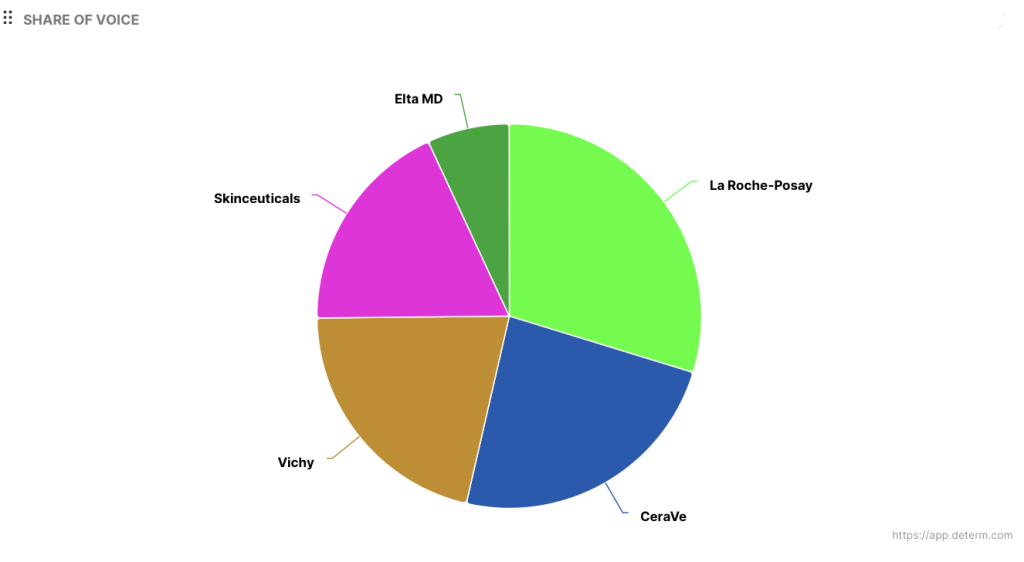
Doing so helps you understand your products, services, marketing strategies, strengths, weaknesses, and more. Unlocking these valuable insights helps you refine your business strategy and stay ahead of the competition.
Why Should You Conduct Competitor Analysis?
Still not convinced of the power of a competitive analysis? Here are a few more benefits to sway you in the right direction.
1. Understand Your Target Audience
A close look at who your rivals are focusing on and what they’re saying can give you a wealth of knowledge about the customers you should aim for.
This insight can guide you in sharpening your focus on your own target audience and crafting marketing campaigns that really hit the mark with them.
2. Identify Your Strengths and Weaknesses
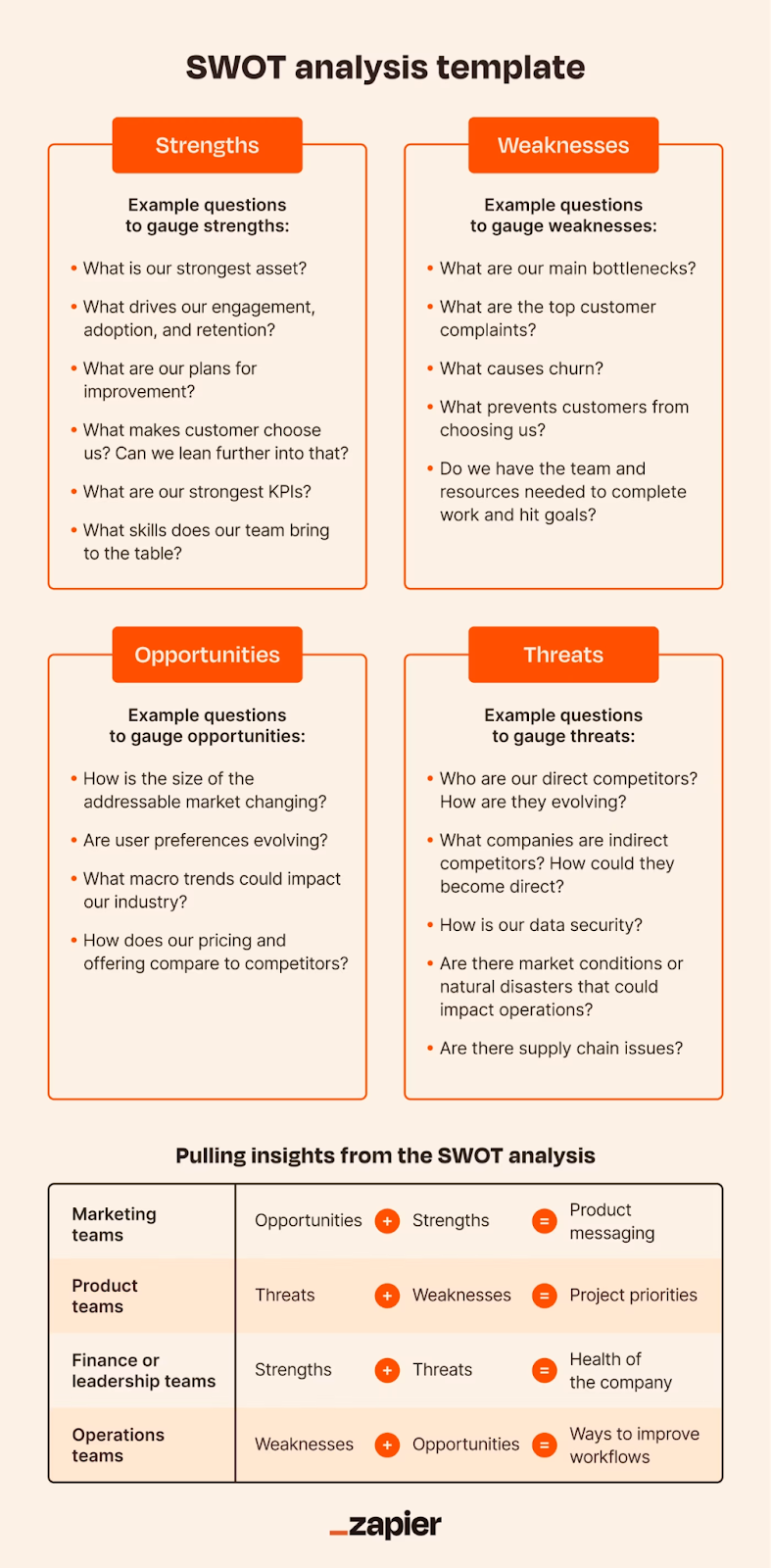
A thorough competitor analysis provides a deeper understanding of both your competitors and your own company. By uncovering the strengths and weaknesses of competitors, you can identify what works well and what doesn’t.
This helps make better business decisions and avoid common pitfalls. You also learn a lot about your brand in the process (read: reveal your company’s strengths and weaknesses).
Thankfully, tools like heat maps can further enhance this process by analyzing factors like customer loyalty, website traffic, and product performance, providing valuable insights for improvement.
3. Gain Industry Knowledge
Diving head-first into a competitive analysis not only sheds light on what’s happening in your industry but also sets you up as a go-to expert by sharing what you know.
Imagine getting your articles out there in top publications. Or lighting up the screen for your next webinar. Or writing a LinkedIn post that goes viral (while showing off your know-how).

When you share your expertise, you also build a bridge of trust with your customers. They start to see you as their point of reference for dependable advice and insights, which deepens their connection with you and keeps them coming back for more.
4. Identify Market Gaps
Digging into competitive analysis helps you spot holes that are sometimes invisible to the naked eye.
You’ll be surprised at what digging in the weeds can uncover. It might just shine a light on customer needs that haven’t been met yet and open the doors to fresh opportunities for innovation.
Armed with these insights, you can craft one-of-a-kind products and services that fill those gaps and set your brand apart in a meaningful way.
5. Establish your Unique Selling Proposition (USP)
If you want to stand out from the crowd, analyzing your competitors is a powerful first step in establishing a USP for your company. Every brand is different. So, what unique value do you offer your customers? A little inward (and outward) reflection goes a long way.
For example, a password manager company could use competitive analysis to compare its service to others regarding features, pricing, security, and user reviews.
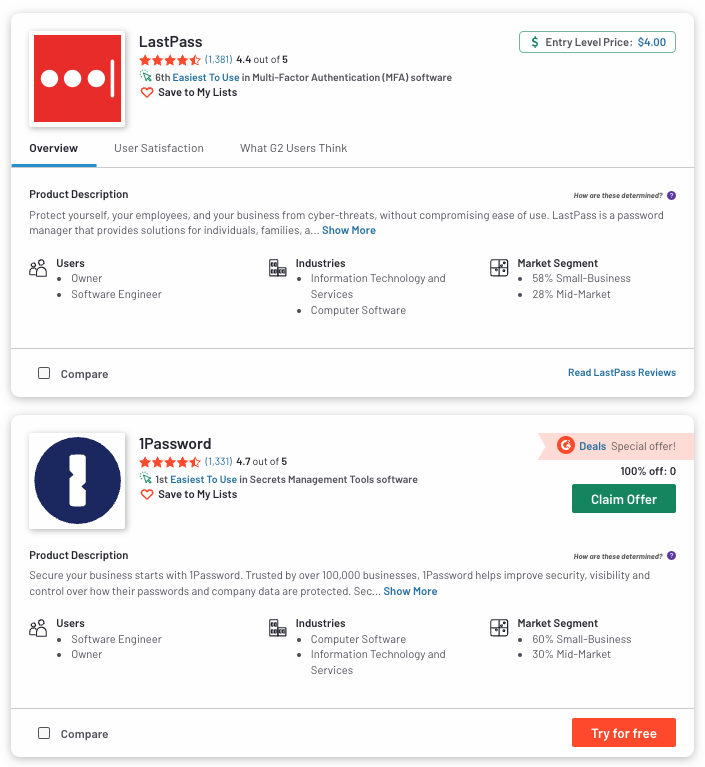
This analysis reveals the company’s unique selling points, identifies areas for improvement, and helps attract new customers.
6. Identify Industry Trends
Looking at how your competitors invest in marketing (among other trends) can clue you in on changing customer tastes. Or maybe you’re missing out on the latest tech worth dabbling in. In short, it’s one of the best ways to get a clear picture of the market.

That way, you can give yourself the best opportunity to “see” what’s coming and make smart decisions to drive business success for years down the line.
7. Improve Your Customer Service
By arming your sales and customer service folks with the inside scoop on competitors and what’s buzzing in the market, you’re empowering them to serve up the kind of personalized, insightful support that customers crave.
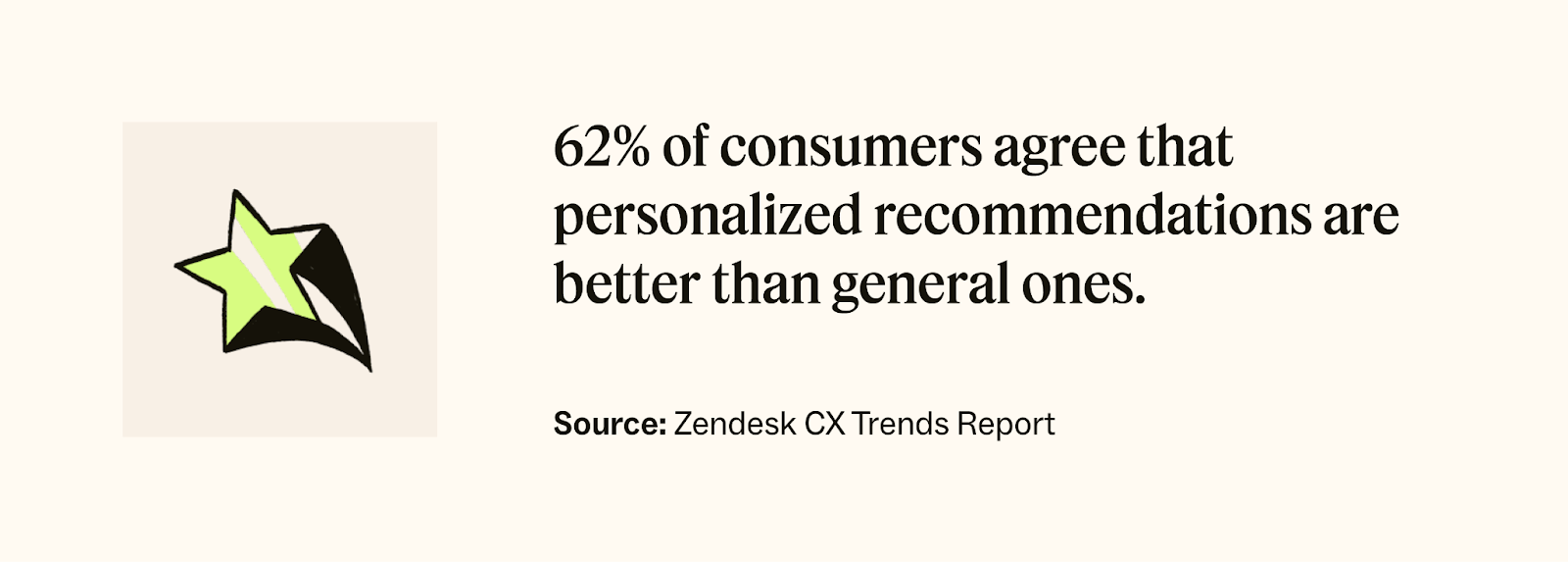
This leads to increased customer satisfaction and clarifies why you’re the better choice.
8. Cost Savings
With inflation sitting at a record high, finding ways to reduce costs is a welcomed task.
Start by closely examining how your competitors handle their day-to-day operations.
What kind of marketing tactics do they use? Do they have any deals with suppliers?
Taking a peek behind the curtain might spark some clever ideas for trimming your costs without cutting corners on quality.
Let’s take a look at another example. Before you dive into a new market, doing your homework on the competition can save you thousands of dollars (and future headaches).
Why? Competitor analysis helps give you a clear view of the playground’s size, who’s already playing in it, and your odds of making a splash.
Armed with this knowledge, you can steer clear of expensive mistakes and make smarter moves right from the start.
For instance, during your analysis, you discovered that a major competitor recently suffered a significant data breach due to inadequate network security practices. This serves as a stark reminder of the importance of implementing robust cybersecurity measures for your own organization.
In response, you decide to evaluate your security infrastructure, focusing on container security thoroughly. Updating container security protocols helps prevent similar vulnerabilities and strengthens defenses against potential cyber threats.
This strategic action, prompted by competitive intelligence, underscores the crucial role of adapting and continuously improving cybersecurity measures to protect against evolving risks.
9. Provide a Benchmark to Measure Growth
Measuring business growth also means understanding your progress and identifying opportunities for improvement. To truly unlock its power, it’s crucial to set clear, relevant criteria. This is where competitive benchmarking comes in.
You gain valuable insights by analyzing your competitors’ performance in key areas like:
- Customer acquisition
- Website rankings
- Follower counts
- SEO strategies
- Funding
That way, you can compare your growth to industry standards and identify potential gaps. Also, you gain a clearer picture of where you excel and where your competitors outperform you.
Practical Tips for Conducting Effective Competitor Analysis
Here are a few tips to run a complete and effective competitive analysis for your marketing strategies.
1. Identify your Primary Competitors
Start by identifying your competitors. Without this data, comparisons can be inaccurate and misleading.
For a deeper dive, divide competitors into two categories: direct and indirect.
Direct competitors offer the same product or service as your company to the same target market. Think of them as head-to-head rivals.
In contrast, indirect competitors provide different products or services but may still fulfill similar needs or goals for your target audience. They’re like companies playing in the same ballpark, even if they’re not on the same field.
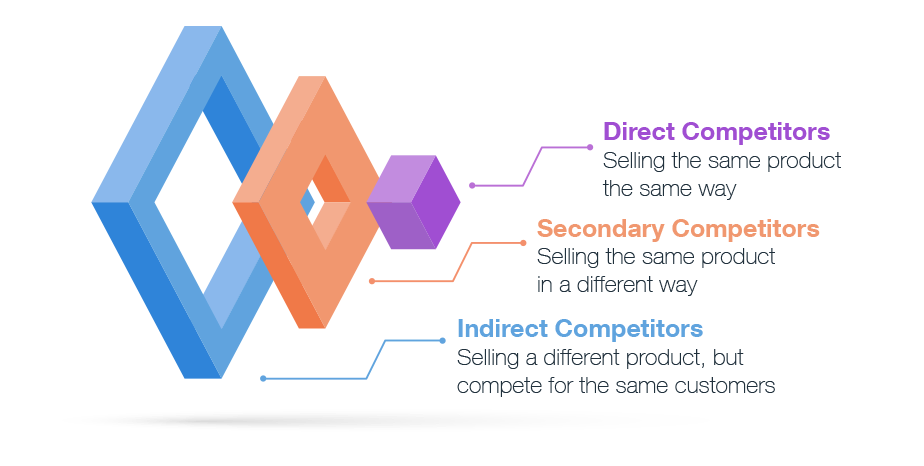
When comparing your brand, prioritize direct competitors for detailed analysis. Their strengths, weaknesses, and strategies directly impact your market position.
However, don’t completely ignore indirect competitors. They can evolve, expand their offerings, and turn into direct competitors. Keeping them on your radar allows for proactive adjustments and ensures you’re aware of the situation.
2. Gather Information
Gather data from public sources like websites, social media, press releases, and financial reports.
Leverage competitor analysis tools to help with the heavy lifting of market share data, website traffic analysis, and brand sentiment monitoring.
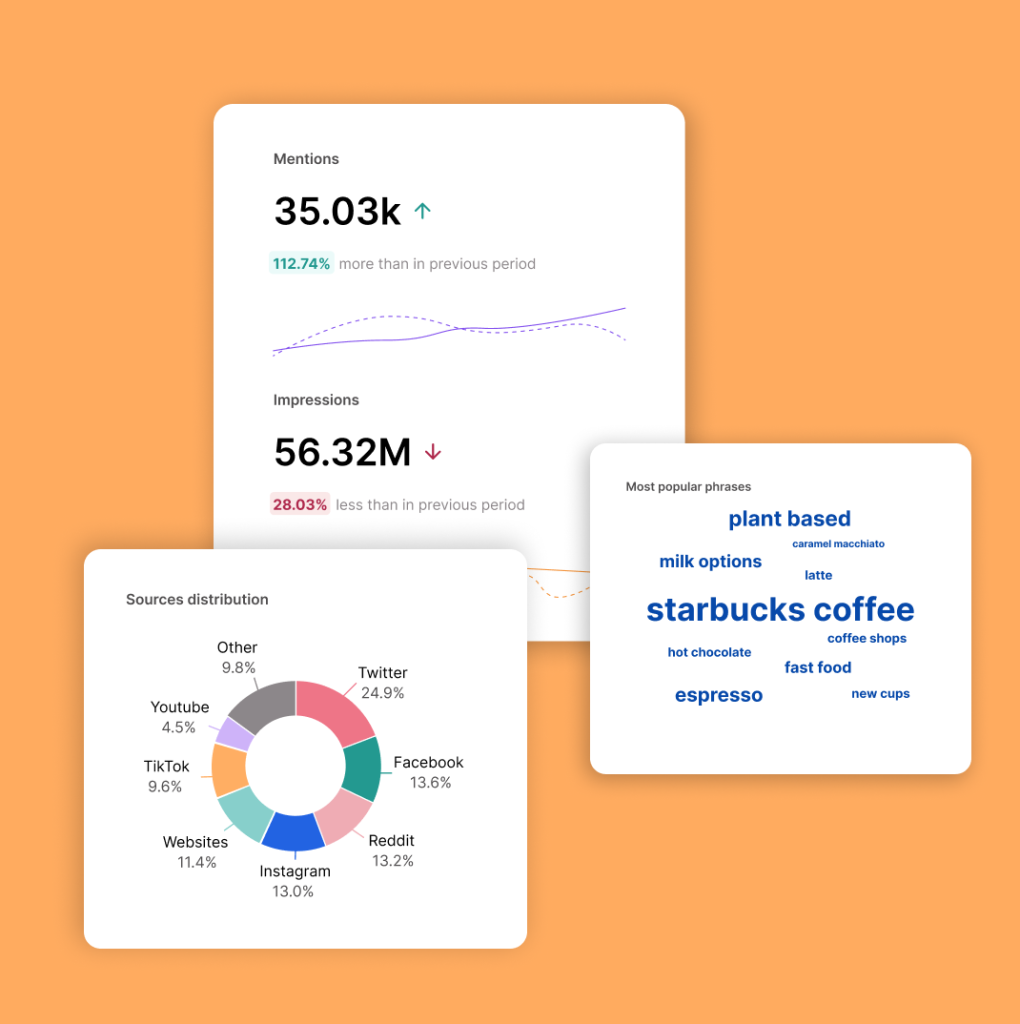
Engage in customer surveys and interviews to understand competitor perceptions and brand preferences. Don’t forget internal data on your sales, marketing performance, and customer feedback.
3. Analyze the Information
Compare competitor offerings, pricing, marketing strategies, and customer service.
Identify their strengths (e.g., innovative features, strong brand recognition) and weaknesses (e.g., limited product line, negative customer reviews).
Analyze their market positioning and competitive advantages. Then, look for gaps and opportunities where your offering can excel.
4. Develop Insights
Turn your analysis into actionable insights. What can you learn from competitors’ successes and failures? How can you differentiate your offering and target specific customer segments?
Identify opportunities to improve your product/service, marketing strategies, pricing, or customer service. Develop a competitive advantage based on individual strengths and target market needs.
For instance, if you notice your competitor’s smartphone app doesn’t offer voice control, but customers are asking for it, you could enhance it with voice command capabilities.
This move directly responds to consumer desires, distinguishing your product in a crowded market.
5. Update Regularly
Schedule regular updates to your competitive analysis, at least quarterly or whenever significant changes occur. For example, keep a close eye on:
- Marketing campaigns
- Customer sentiment
- Product launches
- Competitor news
Also, track industry trends and emerging technologies that could impact the competitive landscape. Proactive monitoring keeps you agile.
How Often Should You Conduct a Competitive Analysis?
The frequency of competitive analysis depends on several factors, including your industry, the pace of change, and your strategic goals.
Here’s how often you should conduct competitive analysis:
- Annual: A good basis for a comprehensive analysis of the industry and its key competitors. It helps you understand the overall situation and identify important trends.
- Quarterly: A good option for slower-moving industries or if you want to stay on top of your competitors’ key moves.
- Monthly: Ideal for highly dynamic industries or when you need to track competitor activity for a specific campaign or initiative closely.
Here are some other circumstances in which you should conduct a competitor analysis:
- When introducing new products or services, competitor analysis can help you determine how competitors will react and what gaps can be filled.
- If your sales, marketing, or customer satisfaction metrics change significantly, investigate whether competitor activity contributes.
- Stay informed of new regulations, technology, or customer trends that may impact the competitive environment.
Sometimes, you might also have to conduct an unscheduled competitor analysis:
- When a specific competitor makes an influential move, perform targeted analysis to understand the potential impact.
- Set up alerts or follow your competitors on social media to stay up-to-date on daily activities and announcements.
Remember: The key is to find a balance between staying informed and avoiding information overload. Tailor your approach to your specific needs and resources.
Final Thoughts
Competitor analysis helps unlock the key to your growth. Understanding a company’s strengths, weaknesses, and strategies can give you valuable insights to hone your approach and dominate the market.
There you have it. However, remember that knowledge without action is like a seed that isn’t sown.
Determ allows you to see all your competitors in a panoramic view. Let our AI assistant, Synthia, analyze them in seconds. Understand your market position, identify opportunities, and gain actionable insights through specialized reports. Don’t fall into analysis paralysis.
Always stay one step ahead.


